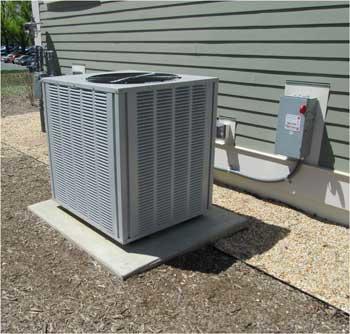Investing in a new HVAC system upscales your home. However, ensure to opt for an energy-efficient system. Regardless of the high initial cost, the benefits of an upgraded system offset the price tag. This energy-efficient HVAC system saves money on utility bills while boosting the level of comfort in your home. Here are steps to be sure that you are having an energy-efficient HVAC system.
Mind load calculations
Formulating the ideal energy-efficient system design requires understanding size. This is through accurate determination of load calculations. With this, an energy-efficient system is easy to design. Oversizing the system costs more and increases energy bills and maintenance costs. A reputable HVAC system company might have a software program to determine cooling load calculations accurately.
Determining load calculation involves the temperature and moisture of the air. A sensible approach is to determine a room-by-room cooling load calculation when looking forward to designing the ideal energy-efficient HVAC system. The room-by-room approach is preferable for considering unique features in each room such as the number of windows.
Routine maintenance
Even the most energy-efficient HVAC system wears down over time. So, after investing in a system, ensure to schedule routine preventive maintenance by the best Houston HVAC contractors. Ignoring preventive maintenance throws away all the good intentions of investing in an energy-efficient system. So, you are likely to end up with hefty energy bills. Routine maintenance allows detecting problems like dirty coils and filters that might compromise the efficiency of your unit.
Seasonal Energy Efficiency Rating
It is very important to understand the energy-efficient ratings of your HVAC system. The Seasonal HVAC Energy Efficiency Rating (SEER) determines the energy efficiency of the system depending on the seasonal average but not particular conditions. All new HVAC systems should have a minimum SEER rating of about 13 for those in the northern part of the country according to the U.S. Department of Energy. Upgrading your system from a SEER rating of 10 to 13 significantly lowers your energy consumption by about 30 percent.
Understand energy efficiency ratings
Annual Fuel Utilization Efficiency (AFUE) measures the energy efficiency of a HVAC system. It calculates the amount of fossil fuel converted by the heater to heat your home. Modern HVAC systems come with an AFUE rating of about 98 percent. This means that this is the percent of fuel for burning in your furnace to get the ideal heat in your home. Consider upgrading your single speed furnace to one with AFUE rating of about 70 or with varied speed having AFUE rating at 95.
Add a smart thermostat
Another way to increase the energy efficiency of your HVAC system is by investing in a smart thermostat. This allows saving more money on energy bills. Smart thermostats come with varied features including Wi-Fi, wireless, and digital technology. One with remote access allows managing your temperature while away from home.
Investing in this cutting edge device comes with a sensor for managing your heating and cooling system. A Wi-Fi thermostat comes with various features compared to a standard model. You can program the ideal temperature for different times during the day including when away from home. When coming back from a vacation, you can adjust to your ideal temperature before reaching.
VRF system
This type of energy-efficient system offers comfort and effectively addresses various heating and cooling needs in your home. A VRF system supplies heat and cooling simultaneously in various locations in a single property. Unlike huge noisy central units, VRF systems have multiple small air handlers with individual controls. This system is energy efficient for its variable speed compressor running at an appropriate capacity to match current conditions.
A VRF system allows different areas in your home to have cooling and heating simultaneously. Apart from its exceptional energy efficiency, this system works without making noise. This eliminates the disturbing loud fans from regular systems. Additionally, a VRF system is ideal when worried about an obtrusive HVAV system interfering with your interior décor. The air handlers of a VRF system are tiny and fit into any room inconspicuously.
Appropriate insulation
Poor insulation allows loss of air conditioner air making your HVAC system to work harder. This consumes more energy and hikes the utility bills. Appropriate insulation in the windows, walls, and attic is necessary to allow your system to run efficiently. Additionally, the ducts, pipes, and other outlets also need appropriate insulation to avoid stressing your HVAC system.
In conclusion
Energy efficiency is a big concern for homeowners. Ensure to invest in an energy-efficient HVAC system to lower energy costs. Being sure that your system runs to your expectations requires investing in a smart thermostat, appropriate insulation, and understanding energy efficiency ratings. Understanding this will allow your system to run effectively to ensure the comfort of your home while lowering your energy bill.






